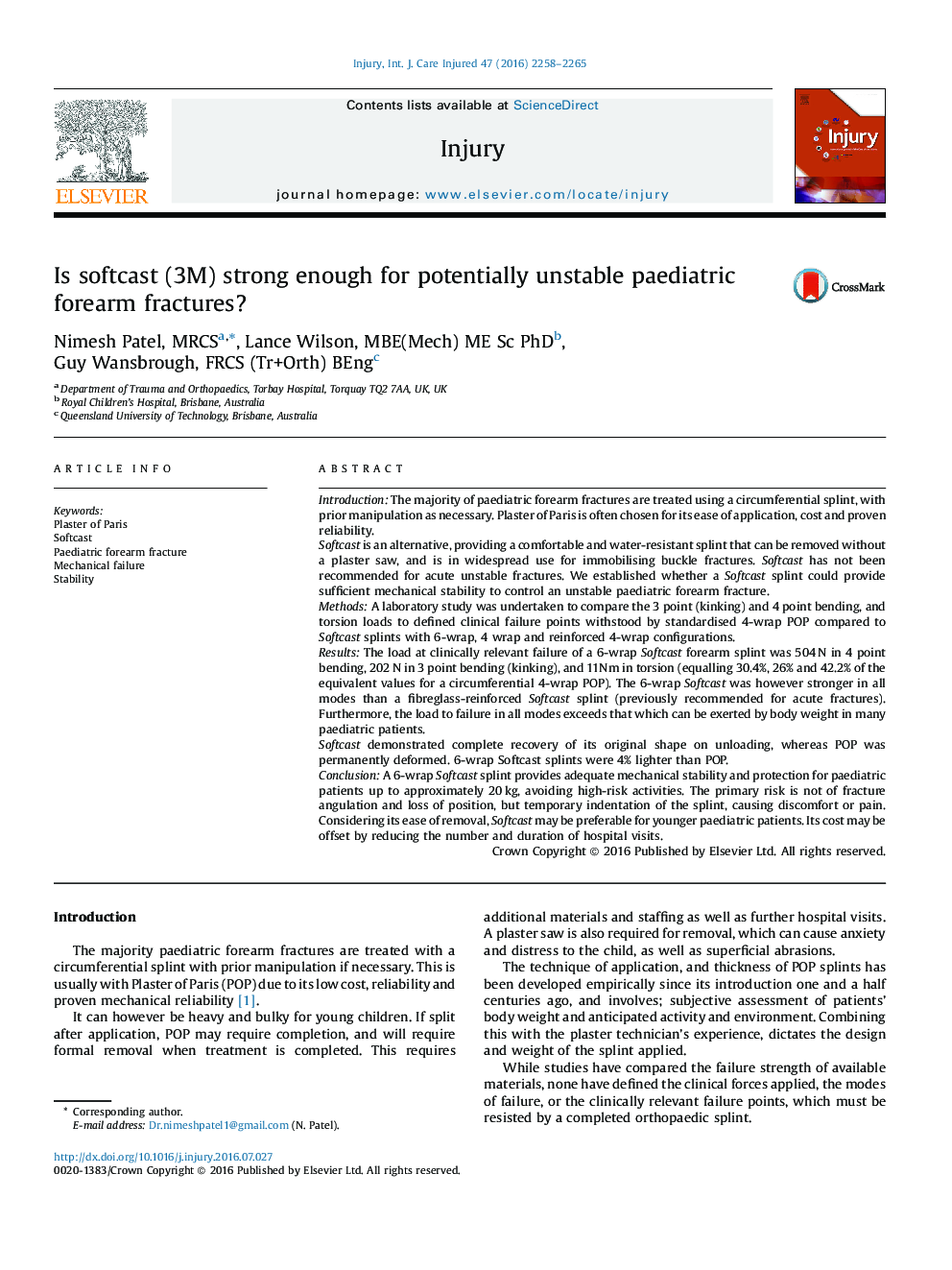| کد مقاله | کد نشریه | سال انتشار | مقاله انگلیسی | نسخه تمام متن |
|---|---|---|---|---|
| 5652901 | 1407229 | 2016 | 8 صفحه PDF | دانلود رایگان |

IntroductionThe majority of paediatric forearm fractures are treated using a circumferential splint, with prior manipulation as necessary. Plaster of Paris is often chosen for its ease of application, cost and proven reliability.Softcast is an alternative, providing a comfortable and water-resistant splint that can be removed without a plaster saw, and is in widespread use for immobilising buckle fractures. Softcast has not been recommended for acute unstable fractures. We established whether a Softcast splint could provide sufficient mechanical stability to control an unstable paediatric forearm fracture.MethodsA laboratory study was undertaken to compare the 3 point (kinking) and 4 point bending, and torsion loads to defined clinical failure points withstood by standardised 4-wrap POP compared to Softcast splints with 6-wrap, 4 wrap and reinforced 4-wrap configurations.ResultsThe load at clinically relevant failure of a 6-wrap Softcast forearm splint was 504Â N in 4 point bending, 202Â N in 3 point bending (kinking), and 11Nm in torsion (equalling 30.4%, 26% and 42.2% of the equivalent values for a circumferential 4-wrap POP). The 6-wrap Softcast was however stronger in all modes than a fibreglass-reinforced Softcast splint (previously recommended for acute fractures). Furthermore, the load to failure in all modes exceeds that which can be exerted by body weight in many paediatric patients.Softcast demonstrated complete recovery of its original shape on unloading, whereas POP was permanently deformed. 6-wrap Softcast splints were 4% lighter than POP.ConclusionA 6-wrap Softcast splint provides adequate mechanical stability and protection for paediatric patients up to approximately 20Â kg, avoiding high-risk activities. The primary risk is not of fracture angulation and loss of position, but temporary indentation of the splint, causing discomfort or pain. Considering its ease of removal, Softcast may be preferable for younger paediatric patients. Its cost may be offset by reducing the number and duration of hospital visits.
Journal: Injury - Volume 47, Issue 10, October 2016, Pages 2258-2265